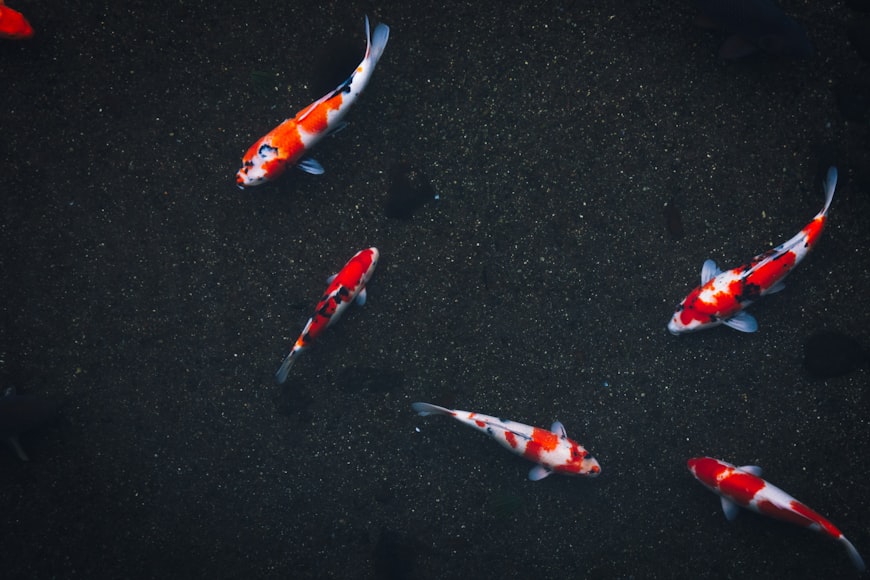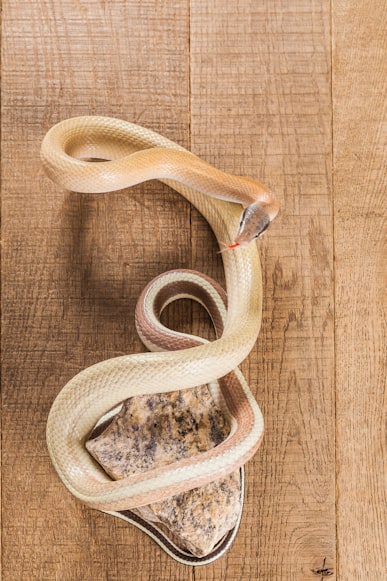Freshwater Fish: Minnows Outline

Introduction:
- Definition of minnows and their characteristics
- Importance of minnows in the aquatic ecosystem
Species of Minnows:
- Common minnow (Phoxinus phoxinus)
- Bluntnose minnow (Pimephales notatus)
- Fathead minnow (Pimephales promelas)
- Creek chub (Semotilus atromaculatus)
- Golden shiner (Notemigonus crysoleucas)
Habitat and Distribution:
- Preferred habitats, including rivers, streams, ponds, and lakes
- Geographic distribution of different minnow species
- Role of minnows as environmental indicators
Biology and Life Cycle:
- Life span and size of minnows
- Reproductive behavior, including spawning and egg development
- Feeding habits and prey preferences
- Interactions with other aquatic organisms
Importance of Minnows:
- Role in the food chain as a food source for larger fish and birds
- Indicators of water quality and ecosystem health
- Use in bait fishing and recreational fishing
- Cultural significance in some communities
Conservation and Threats:
- Factors affecting minnow populations, such as habitat loss, pollution, and invasive species
- Conservation measures to protect minnow populations
- Role of minnows in aquatic biodiversity
Keeping Minnows as Pets:
- Suitability of minnows for home aquariums
- Tank setup, water parameters, and filtration requirements
- Feeding and care of minnows
- Troubleshooting common problems associated with keeping minnows
Conclusion:
- Summary of the importance and diversity of minnows in freshwater ecosystems
- Highlight the need for conservation efforts to protect minnow populations
- Encourage stewardship of aquatic habitats to support thriving minnow populations
Introduction

Introduction
Minnows, belonging to the family Cyprinidae, are a diverse group of freshwater fish found throughout the world. Characterized by their small size, graceful movements, and adaptability, minnows play a vital role in aquatic ecosystems.
Definition
Minnows are defined as small, schooling fish that typically measure less than 6 inches (15 cm) in length. They possess a streamlined body shape, a small head, and a terminal mouth. Their fins are usually rounded and well-developed, allowing them to swiftly swim and maneuver through the water.
General Characteristics and Adaptations
Minnows exhibit several distinctive characteristics and adaptations that enable them to thrive in freshwater habitats:
- Size and Agility: Their small size and agility make them adept at navigating shallow, vegetation-rich environments, avoiding predators, and seeking out food sources.
- Schooling Behavior: Minnows form large schools for protection and efficiency in foraging. The collective actions of the school create a confusing and overwhelming experience for predators, reducing their chances of being caught.
- Omnivorous Diet: Minnows are omnivorous, feeding on a wide variety of plant matter, insects, worms, and other small creatures. This dietary flexibility allows them to exploit various food sources and survive in diverse habitats.
- Coastal Waters Adaptation: Some minnow species have adapted to life in coastal waters, exhibiting adaptations such as salt tolerance and stronger fins to withstand tidal currents.
- Habitat Versatility: Minnows thrive in a variety of aquatic environments, including rivers, streams, lakes, ponds, and marshes. Their adaptations allow them to tolerate fluctuating water temperatures, flow rates, and oxygen levels.
Species Diversity

In the vast tapestry of freshwater ecosystems, minnows play a vital role as a crucial link in the food chain and a source of fascination for nature enthusiasts alike. Their remarkable species diversity manifests in an array of sizes, shapes, and colors, reflecting the intricate adaptations these tiny fish have developed to thrive in their aquatic habitats.
Common Minnow Species in Freshwater
Freshwater ecosystems across the globe are home to a wide range of minnow species, each with its unique traits and ecological significance. Here are a few of the most commonly found:
- Fathead Minnow (Pimephales promelas): A small, stout fish with a blunt head and a distinctive dark stripe running down its side. Fathead minnows are highly adaptable and can tolerate various water conditions.
- Rosyside Minnow (Couesius plumbeus): A slender, silvery minnow with a rosy stripe along its flank. Rosyside minnows prefer clear, cool streams and rivers.
- Goldfish (Carassius auratus): A domesticated form of the wild crucian carp, goldfish are popular aquarium fish known for their vibrant colors and long, flowing fins.
- Common Shiner (Luxilus cornutus): A small, shiny minnow with a deep body and a blunt snout. Common shiners are often found in large schools and prefer shallow, sandy-bottomed waters.
- Emerald Shiner (Notropis atherinoides): A small, greenish-blue minnow with a silvery stripe running down its side. Emerald shiners inhabit clear, rocky streams and prefer swift currents.
Variations in Size, Shape, and Coloration
Minnows exhibit a remarkable range of variations in size, shape, and coloration. Some species, such as the emerald shiner, are tiny, measuring only a few centimeters in length. Others, like the fathead minnow, can grow to over 10 centimeters. Their body shapes also vary widely, from the elongated shape of the rosyside minnow to the laterally compressed body of the common shiner.
The coloration of minnows is equally diverse. Some species, like the common shiner, exhibit a silvery coloration with a dark stripe. Others, like the emerald shiner, display vibrant hues of green and blue. These variations in coloration serve as camouflage in their respective habitats, providing protection from predators.
Ecological Importance and Conservation
Minnows play a crucial ecological role in freshwater ecosystems. They serve as a vital food source for larger fish, birds, and other aquatic predators. Additionally, their scavenging behavior contributes to the decomposition of organic matter and the maintenance of water quality.
Unfortunately, minnow populations are threatened by various factors, including habitat loss, pollution, and invasive species. Conservation efforts are essential to protect these tiny marvels and ensure their continued existence in freshwater ecosystems.
Conclusion
The species diversity of minnows in freshwater ecosystems is a testament to the remarkable adaptability and resilience of these tiny fish. Their variations in size, shape, and coloration reflect the myriad habitats they occupy and the diverse ecological niches they fill. By understanding and appreciating the enchanting diversity of minnows, we not only enrich our knowledge of freshwater ecosystems but also contribute to their conservation for generations to come.
Habitat and Distribution

Minnows, small freshwater fish belonging to the Cyprinidae family, are found in a wide range of aquatic environments across the world. Their adaptability and resilience have led to their presence in various habitats, from streams and rivers to lakes, ponds, and even brackish waters.
Types of Freshwater Environments
Minnows prefer clear, flowing water with moderate temperatures and oxygen levels. They are commonly found in:
- Streams and Rivers: Minnows thrive in the moving waters of streams and rivers, where they find food, shelter, and spawning grounds.
- Lakes and Ponds: They also inhabit lakes and ponds, where they often feed on zooplankton and insects near the surface or vegetation along the shores.
- Wetlands: Minnows can be found in wetlands, such as marshes and swamps, which provide ample food and cover for foraging.
Geographic Range and Distribution
Minnows have a global distribution and are found on all continents except Antarctica. They are particularly common in:
- North America: Minnows are widespread throughout North America, from Canada to Mexico. The Mississippi River basin is home to a diverse range of minnow species.
- Europe: Minnows are abundant in many European countries, including the United Kingdom, Germany, and France.
- Asia: Minnows are found in numerous rivers and lakes across Asia, from the Yangtze River in China to the Mekong River in Southeast Asia.
Some minnow species have limited geographic distributions and are endemic to specific regions, such as the Ozark Minnow in the Ozark Mountains of the United States. Others, like the Common Carp, have been introduced to various parts of the world and have become invasive in some ecosystems.
Conclusion
Minnows are adaptable and hardy fish found in a wide variety of freshwater environments. Their presence in streams, rivers, lakes, ponds, and wetlands highlights their importance to these ecosystems as a food source for other fish and wildlife. Understanding their habitat and distribution is crucial for conservation efforts and maintaining the health of aquatic systems.
Diet and Feeding Habits

Freshwater minnows are a diverse group of fish found in a wide range of aquatic habitats around the world. As small, schooling fish, they play an important role in the food chain as both consumers and prey.
Primary Food Sources
Minnows are omnivorous feeders, with their diet consisting primarily of:
- Plankton (microscopic organisms floating in the water)
- Small insects
- Crustaceans (such as shrimp and water fleas)
- Fish eggs and larvae
- Plant matter (such as algae and diatoms)
Feeding Behaviors
Minnows are generally active feeders by day and feed in mid-water or near the bottom of the water column. They use their streamlined bodies and agile swimming abilities to chase and capture small prey.
Some minnows, such as the fathead minnow, also exhibit grazing behaviors, where they feed on algae and other plant material attached to rocks or vegetation.
Role in the Food Chain
As prey species, minnows provide a vital food source for larger fish, birds, and mammals. Their small size, abundance, and schooling behavior make them easy targets for predators.
On the other hand, as consumers, minnows play an important role in controlling populations of zooplankton and small insects. Their feeding habits help maintain a balance within the aquatic ecosystem.
Feeding in Captive Environments
When kept in captivity, minnows should be fed a varied diet that mimics their natural food sources. This can include:
- Frozen or live brine shrimp
- Daphnia
- Bloodworms
- Flake fish food
- Shelled peas or other plant matter
It is important to avoid overfeeding minnows, as this can lead to health problems. Feed them small amounts several times a day, and remove any uneaten food after a short period.
Reproduction and Life Cycle
Minnows, a diverse group of small, freshwater fish, play a vital role in aquatic ecosystems. Their reproduction and life cycle are fascinating processes that contribute to their ecological importance.
Breeding Patterns and Spawning Rituals
Minnows exhibit diverse breeding patterns, varying among species and depending on environmental factors. Some species are opportunistic breeders, spawning whenever conditions are favorable, while others have specific spawning seasons.
During spawning, male minnows engage in courtship displays to attract females. These displays involve vibrant coloration, fin flaring, and chasing. Females typically choose mates with larger fins and brighter colors.
Spawning occurs when the female releases eggs, which are immediately fertilized by the male. Eggs are usually laid on aquatic vegetation, rocks, or the substrate.
Duration of Life Cycle and Factors Influencing Longevity
The life cycle of minnows varies depending on species. Most species have relatively short lifespans, typically ranging from one to five years. However, some species, such as the fathead minnow (Pimephales promelas), can live for up to 10 years.
Longevity is influenced by factors such as water temperature, food availability, predation, and disease. Minnows that live in stable, warm environments with abundant food sources tend to have longer lifespans. Conversely, minnows in harsh conditions, such as polluted waters or areas with high predation, may have shorter lifespans.
Importance of Reproduction and Life Cycle
The reproduction and life cycle of minnows are essential for the maintenance of aquatic ecosystems. Minnows provide a vital food source for larger fish, birds, and mammals. Their reproductive success ensures the continuity of these food webs.
Additionally, minnows play an important role in nutrient cycling and water quality regulation. Their presence helps maintain healthy aquatic habitats and supports the biodiversity of other organisms.
Conclusion
The reproduction and life cycle of minnows are complex and dynamic processes that contribute to their ecological significance. By understanding these processes, we can better appreciate the fragility of aquatic ecosystems and the importance of protecting these fascinating creatures.
Ecological Importance
Minnows, belonging to the family Cyprinidae, are small freshwater fish that play a crucial ecological role in their aquatic ecosystems. They serve as:
Indicators of Water Quality
- Minnow species have varying degrees of tolerance to pollution and habitat degradation.
- Their presence or absence can indicate the health of a water body.
- For example, fathead minnows are known to be tolerant of low oxygen levels and high ammonia concentrations, while other species like dace may be more sensitive to disturbances.
Role in Nutrient Cycling and Food Webs
- Minnows are omnivorous and feed on a wide range of organisms, including algae, invertebrates, and detritus.
- They play a vital role in breaking down organic matter and releasing nutrients back into the ecosystem.
- As prey species, minnows are an important food source for larger fish, birds, and mammals.
- Their presence helps support higher trophic levels and maintain the balance of aquatic food webs.
Specific Roles:
- Fathead Minnows (Pimephales promelas):
- Excellent indicators of pollution due to their tolerance to various contaminants.
- Feed heavily on algae, helping to control excessive growth.
- Bigeye Shiner (Notropis dorsalis):
- Found in relatively clean, flowing waters.
- Their presence indicates good water quality and supports the health of other aquatic organisms.
- Sand Shiner (Notropis stramineus):
- Inhabits sandy habitats and plays a role in nutrient cycling by feeding on detritus and insects.
- Emerald Shiner (Notropis atherinoides):
- Found in clear streams and lakes.
- Their populations can provide insight into the effects of habitat fragmentation and pollution.
Conservation Significance
Minnows are facing threats from habitat loss, pollution, and invasive species. Protecting their populations is essential for maintaining the health and biodiversity of freshwater ecosystems. Conservation efforts include:
- Reducing pollution sources and implementing best management practices to improve water quality.
- Restoring and preserving natural habitats, such as wetlands and riparian zones.
- Controlling the spread of invasive species that compete with or prey on minnows.
By safeguarding minnows and their critical ecological roles, we contribute to the overall health and sustainability of our precious freshwater resources.
Angling and Conservation
Significance of Minnows in Recreational Fishing
Minnows, ubiquitous freshwater fish that form the foundation of aquatic ecosystems, play a crucial role in recreational angling. As a primary food source for game fish such as trout, bass, and walleye, minnows are essential for maintaining balanced and thriving fish populations.
Anglers rely on minnows as live bait to attract and catch larger fish. Their small size, lively nature, and irresistible scent make them an effective and popular option for both novice and experienced anglers. The presence of abundant minnows in a waterbody can significantly increase fishing success and create a more enjoyable experience for anglers.
Conservation Efforts to Protect Minnow Populations
Despite their importance, minnow populations face various threats, including habitat loss, pollution, and invasive species. Conservation efforts are essential to ensure the sustainability of minnow populations and the recreational fishing industry they support.
Habitat Conservation:
- Preserving wetlands, streams, and other natural habitats where minnows thrive.
- Implementing land use practices that protect riparian zones and water quality.
Pollution Reduction:
- Controlling agricultural runoff and industrial discharges that can contaminate minnow habitats.
- Promoting the use of environmentally friendly practices to minimize chemical pollution.
** Invasive Species Management:**
- Preventing the introduction of invasive species that compete with or prey upon minnows.
- Managing existing invasive species populations to reduce their impact on minnows.
Other Conservation Measures:
- Establishing catch limits and size restrictions for minnows to prevent overfishing.
- Promoting ethical angling practices that minimize harm to minnows used as bait.
- Educating anglers on the importance of minnow conservation.
By implementing these conservation measures, we can protect the vitality of minnow populations and ensure the continued enjoyment of recreational fishing for generations to come. Minnows are not just a baitfish; they are an integral component of healthy aquatic ecosystems and a cornerstone of the angling experience.
Captive Care
Minnows, freshwater fish belonging to the Cyprinidae family, are popular aquarium pets due to their hardiness and ease of care. However, providing optimal conditions for their well-being is essential. Here’s a comprehensive guide to the captive care of minnows in aquariums:
Tank Considerations:
- Tank Size: Minnows are active swimmers and require ample space. A 10-gallon tank is suitable for a small group of minnows.
- Water Parameters: Minnows thrive in slightly alkaline water with a pH between 7.0 and 7.8. They prefer a temperature range of 65°F to 72°F.
- Substrate: Use fine gravel or sand as a substrate for the tank. Gravel that is too coarse can damage their sensitive barbels.
- Filtration: A filter is crucial to maintain water quality. Choose a filter with a gentle flow rate to avoid stressing the minnows.
- Decorations: Provide hiding places for the minnows, such as plants, driftwood, or plastic decorations.
Feeding:
- Diet: Minnows are omnivorous and eat a variety of live, frozen, and dried foods. Include high-quality flakes, brine shrimp, bloodworms, and freeze-dried insects in their diet.
- Feeding Frequency: Feed minnows 1-2 times per day, providing only as much food as they can consume within a few minutes. Overfeeding can lead to water quality issues.
Maintenance:
- Water Changes: Perform partial water changes of 20-25% weekly to maintain good water quality. Use aged or treated tap water.
- Gravel Vacuuming: Remove any debris or uneaten food that accumulates on the gravel. Avoid over-vacuuming, as it can disturb the minnows.
- Monitoring: Observe the minnows regularly for signs of illness or stress. If you notice any changes in their behavior or appearance, consult with a veterinarian.
Additional Considerations:
- Schooling Behavior: Minnows are social fish and should be kept in groups of at least 6.
- Compatibility: Minnows are generally peaceful but may be aggressive towards other species. Avoid housing them with larger or predatory fish.
- Reproduction: Minnows are prolific breeders. If you don’t plan to breed them, separate males and females or provide plenty of hiding places for the fry.
By following these guidelines, you can provide a healthy and enriching environment for your pet minnows. Remember to prioritize their well-being by monitoring their behavior and maintaining optimal tank conditions to ensure their longevity and happiness.

















